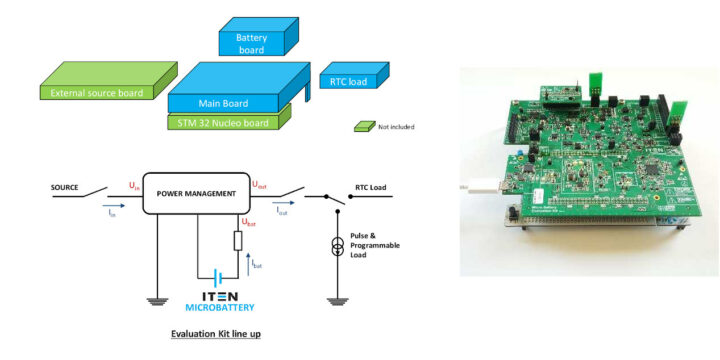Electronic components have shrunk a lot over the year, but batteries are usually one of the larger items in a design. ITEN changes that with solid state lithium-ion micro-batteries in the shape of SMD components with up to 100 µAh capacity.
This is clearly not going to power your next smartphone, but ITEM micro-batteries could be found in ultra-low-power sensors potentially replacing non-rechargeable coin cell batteries with much higher capacities (e,g. 100 mAh).
ITEN says their solid-state micro-batteries are superior to coin cell batteries because those are polluting, difficult to assemble on PCB, costly to recycle and require periodic maintenance once a battery is depleted. In addition, some low-power embedded systems still require high current pulses for instance to drive RF transceivers or actuators leading hardware engineers to rely on oversized coin cell batteries as those can only deliver small currents. The carbon footprint of such batteries is claimed to be 200 to 1000 times less compared to coin cells.
With that in mind, ITEN batteries do not need to have as high capacities as they can be recharged with energy harvesting techniques. The company will demonstrate an autonomous asset monitoring solution showcasing its batteries at the ELECTRONICA trade fair and conference for electronics on November 15–18, 2022. The solution will feature a BLE microcontroller, some sensors, an indoor photovoltaic cell from DRACULA Technologies (LAYERR Technology), as well as of course, ITEN’s rechargeable SMD micro-battery of only 100 µAh capacity. This demo can operate 24/7 while sending data every 10 seconds during the day and every 4 to 5 minutes during the night, and the company claims a 100mAh coin cell battery would be required for the same task.
Solid-state SMD micro-batteries could also be used inside BLE asset tracking, BLE tags, beacons, and sensor data loggers, as well as a backup power supply to keep some clocks or microcontrollers active or to send maintenance alerts in case of failure of the main power source. There’s also one European Directive that recommends getting rid of non-rechargeable batteries in all electronic system designs from the year 2030, so we may start to see this type of battery in more designs from various manufacturers including FDK whose SMD solid-state batteries were features on CNX Software in 2019.
 The company is apparently already selling the SMD batteries, modules, and evaluation kits using 30µAh to 500 µAh batteries, and you would need to contact the company directly to order samples. More details may be found on ITEN’s website and the press release.
The company is apparently already selling the SMD batteries, modules, and evaluation kits using 30µAh to 500 µAh batteries, and you would need to contact the company directly to order samples. More details may be found on ITEN’s website and the press release.
Thanks to TLS for the tip

Jean-Luc started CNX Software in 2010 as a part-time endeavor, before quitting his job as a software engineering manager, and starting to write daily news, and reviews full time later in 2011.
Support CNX Software! Donate via cryptocurrencies, become a Patron on Patreon, or purchase goods on Amazon or Aliexpress





